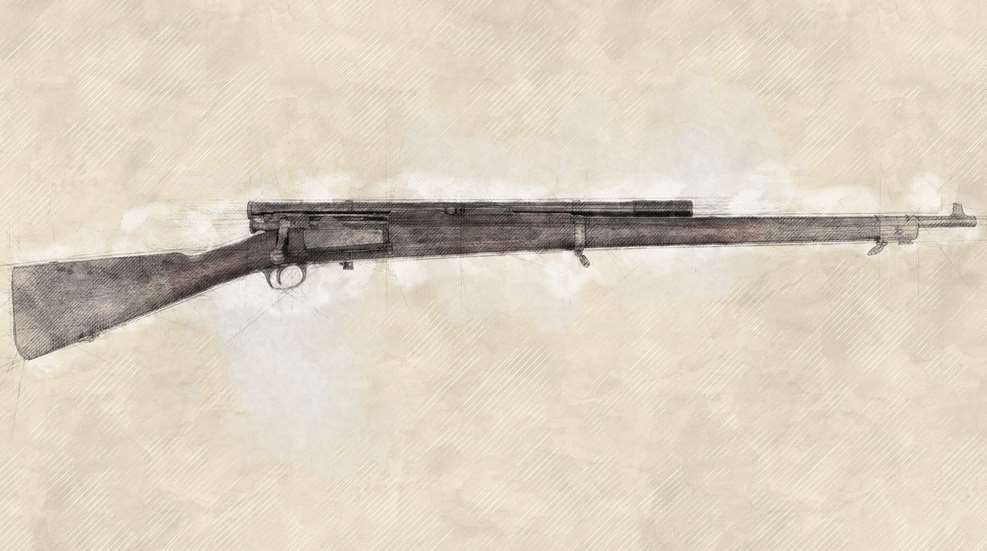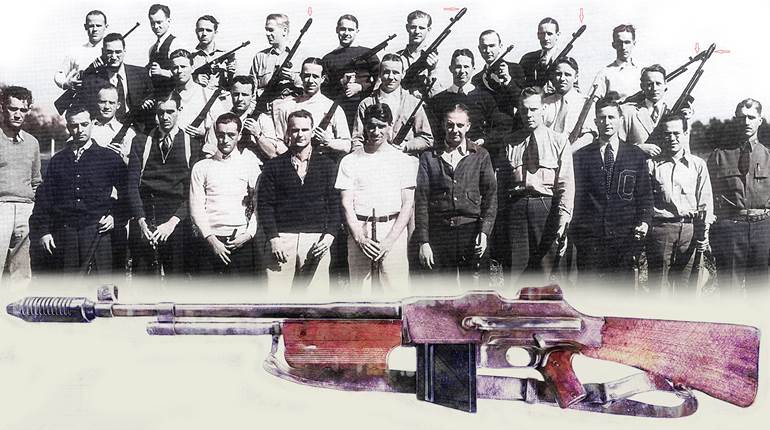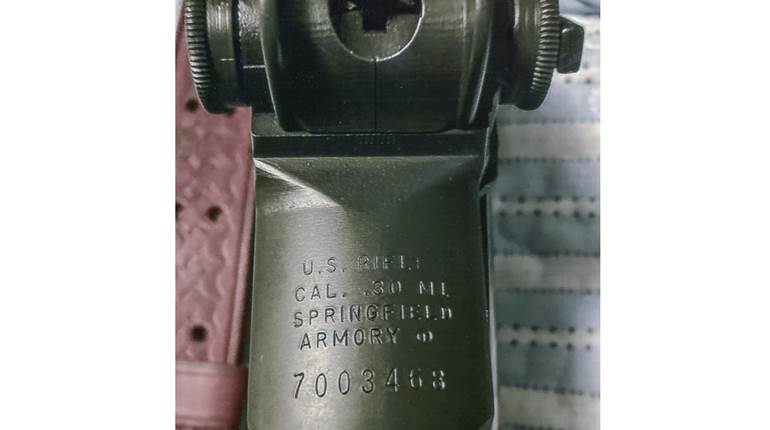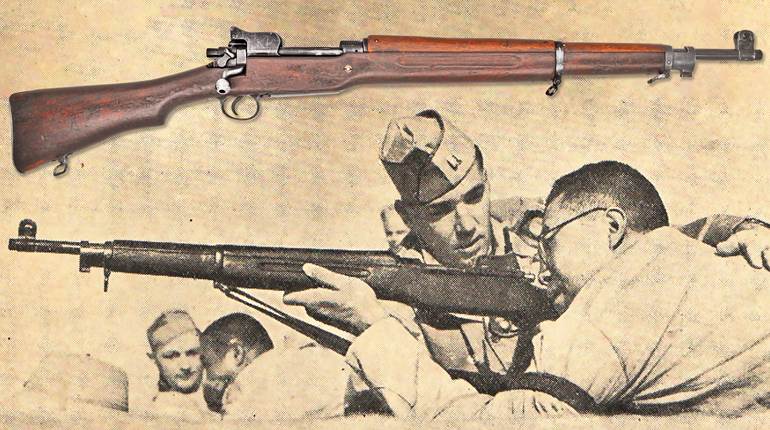
The American Civil War was the first conflict in our nation’s history in which telescopic-sighted rifles were employed in combat to any appreciable extent. These muzzleloading, percussion rifles were fabricated by a number of civilian gunsmiths and gunsmithing firms, primarily for benchrest shooting matches. Such rifles normally weighed from 25 to 35 lbs., had heavy barrels (of generally between .50 and .58 cal.) and were capable of surprising accuracy. While many, if not most, had iron sights, a number were fitted with long sheet-metal or brass telescopes, typically two to three feet in length. When war erupted, limited numbers of these civilian benchrest match rifles were procured by both the Union and Confederate armies for issuance to select “sharpshooters” and were used throughout the war, often with notable success. Curiously, after Appomattox, the U.S. Army showed virtually no interest in telescopic-sighted rifles, despite their proven effectiveness during the recently concluded war. Such was the case for the next three-and-a-half decades.

Then, on June 8, 1900, a board appointed by Lt. Col. Frank H. Phipps, commanding officer of Springfield Armory, was convened by order of the U.S. Army Ordnance Dept. to evaluate a Model 1898 Krag rifle fitted with a telescopic sight designed and manufactured by the Cataract Tool & Optical Co. of Buffalo, N.Y. The rifle was described as “United States Military Rifle – Krag-Jorgensen – Equipped with Sharpshooters’ Telescopic Sight.” The likely reason for the renewed interest by the American military in a telescopic-sighted rifle after remaining dormant for so long is that the Krag was the U.S. Army’s first standardized smokeless-powder service rifle. Its .30-40 Krag cartridge possessed a flatter trajectory and better ballistic performance than the larger-caliber blackpowder cartridges previously in use. Presumably, a telescopic sight would be able to enhance the long-range accuracy of the rifle. A couple of nondescript rifle telescopes were reportedly looked at previously by the Ordnance Dept. in 1896-1897, but none were deemed to be suitable for further consideration.
The minutes of the Ordnance testing board related the following regarding the Model 1898 Krag with the Cataract telescope:
“The sight consists of a telescope which is attached by means of brackets to the left side of the rifle. The front bracket is secured to the lower band by two screws, and the ring through which the telescope passes has a horizontal motion to provide for drift and windage. A ball-and-socket joint in this ring allows the telescope to be moved in any direction … The rear bracket is screwed to the side plate of the receiver, and the ring which holds the telescope has a vertical movement for changes of elevation.
“Telescopes of three different powers are submitted for trial, viz. 8 diameters, 12 diameters, and 20 diameters. The medium power (12 diameters) gave the best results.

“The telescope is of practically universal focus; that is, it does not require readjustment for different marksmen or for different ranges. The eye can be placed close to the eyepiece or several inches away without any apparent difference in the focus. Danger of being struck in the eye when the piece recoils can therefore be avoided.
“The lenses are large and are held in place by having the metal of the tubes in which they are mounted spun over their outer edges. The telescope is light, but at the same time strong. The brackets for attaching the telescope to the rifle are strong and durable and there appears to be no tendency to jar loose.
“The sight was tested by actual firings up to a range of 2,000 yards, each member of the board participating in the firings. As a result of this test, the board is of the opinion that the use of this telescopic sight appears to be of especial value in hazy or foggy weather and at long ranges. In either case the target can be seen with remarkable clearness, and the marksman can be absolutely sure that he is aiming at the proper object. This would be of especial importance to sharpshooters acting independently. [Author’s note: Since the word “sniper” was not in widespread use in 1900, the terms “marksman” or “sharpshooter” were used instead].

“The ordinary sight is useful for accurate firing at a regular target up to about 2,000 yards; but it is impossible to see a man or even a small body of men clearly at that range unless projected against the sky or under other very favorable conditions. It is for this reason that volley firing is so largely resorted to at long ranges.
“With a telescopic sight a man could be distinguished easily at 2,000 yards, even with an unfavorable background.
“The board is of the opinion that this sight is suitable for use in the U.S. service, and recommends a number of them be purchased for trial by troops in the field. If found to be satisfactory, a sufficient number should be purchased to supply such a number of the sharpshooters of each organization as experience in the field shall indicate to be desirable.”
Following the favorable report of the test board, the findings were forwarded to the Chief of Ordnance on June 14, 1900. It is reported that the rifle used in the test was subsequently sold to the Cataract company.
Upon receipt of the report, the Chief of Ordnance approved the manufacture by Springfield Armory of six additional Model 1898 Krag rifles fitted with Cataract telescopes for field trials. In the summer of 1901, four of these rifles were sent to Manila in the Philippines and one each to Fort Leavenworth, Kan., and Fort Monroe, Va. The testing consisted chiefly of firing on regulation targets at known ranges and comparing the scores with standard Krag rifles (without telescopes) fired by the same marksmen.

The results of the testing were varied. Some of the soldiers involved in the testing were quite enthusiastic about the performance of the telescope-equipped rifles—others complained that the offset position of the scope, which was necessitated by the upward ejection of the fired cartridge cases, was cumbersome and uncomfortable. It was reported that a couple of the Cataract telescopes suffered damage during the testing, including front lenses that were dislodged due to the force of recoil.
After the conclusion of the field testing, further development of telescopic-sighted Krag rifles was dropped, even though there were demonstrable advantages to the use of telescopes. In 1901, the assets of the Cataract Tool & Optical Co. were acquired by the J. Stevens Arms & Tool Co., which may or may not have had any bearing on the decision to drop further consideration of the Cataract telescopic sight. Regardless, the primary reason for not pursuing the matter further was the ongoing development of the Model 1900 bolt-action rifle that eventually culminated in the adoption of the famed Model 1903 Springfield a few years later.
Five years after the adoption of the Model 1903, the Army tested and subsequently adopted a telescopic sight for the rifle. However, this sight was totally unlike the Cataract design tested with the Krag. Developed by the Warner & Swasey Co., the “Model of 1908 Musket Sight,” was of a rather unusual prismatic design and was small and compact as opposed to the long and slender Cataract scope. A slightly improved “Model of 1913” Warner & Swasey sight was the standard U.S. Army sniper riflescope, teamed with the Model 1903 rifle, during World War I, but it was dropped from service in the mid-1920s.
Only seven Model 1898 Krag rifles fitted with the Cataract telescopic sight were ever fabricated under U.S. government auspices and were never utilized by our armed forces beyond the limited testing in 1900-1901. Nevertheless, the Model 1898/Cataract rifle was, however haltingly, the first step toward the future development of purpose-built telescopic-sighted rifles for our armed forces. It has the distinction of being America’s first prototype sniper rifle of the 20th century—even before the term “sniper” came into vogue.




































